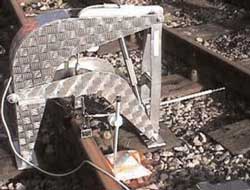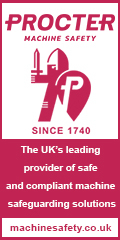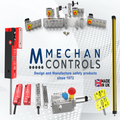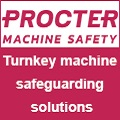
Posted to News on 26th Feb 2010, 10:23
Force and displacement sensors supplied for rail test rigs
Sensor-Technik has supplied force and displacement sensors for test rigs that are used to inspect railway tracks.

Safety is paramount for the railway industry, and one of the most important aspects of this is maintaining all railway tracks in a safe condition. While today's longer welded rails have made the ride much smoother than the shorter jointed rails of old, they do make it more difficult to assess the condition of the lines.
The standard test of the condition of any line is to exert an upwards force on a rail and measure the displacement from the sleeper that results from the force. If the displacement is too high for any given force, then maintenance is required.
Clearly such testing cannot be carried out while the track is in use, so maintenance crews perform the tests at night. However, time is still important, particularly on the busiest of main lines, and the testing has to be performed between services while assuring the safety of the maintenance crews and test rigs.
Quicker testing
One rail operator approached Sensor-Technik to help improve the design of such a test rig to reduce the time taken to perform the tests. This involved supplying a tension loadcell and a displacement sensor that could be interfaced with an existing handheld computer.
Like any heavy maintenance equipment, the hydraulic test rig and all its components needed to be very robust. And while the sensors specified by Sensor-Technik were inherently robust, the design included a rugged housing to provide extra protection, stainless-steel conduit to protect all the cables and special protective boots for all the joints and connections.
Getting the sensors to communicate with the handheld computer was relatively simple, with the majority of the development effort going into ensuring that the test rig was robust enough to withstand harsh environmental conditions and the inevitable abuse from operators.
Sensor-Technik says the test rig has been a great success: the sensors work well and the failure rate is low. However, occasionally sensors have been left in the wrong place and have been crushed by trains, and sensor cables have been known to become caught in the hydraulics and pulled out. As Morten Moller, Managing Director of Sensor-Technik UK, points out: "We can can go to great lengths to create ruggedised equipment that will survive day-to-day use with ease, but we cannot account for every possible misuse!"
Follow the link for more information about Sensor-Technik's application development services.
Want the latest machine building news straight to your inbox? Become a MachineBuilding member for free today >>

















